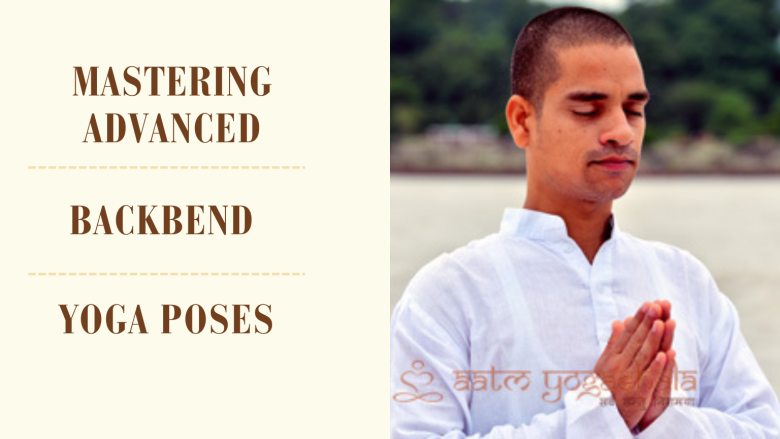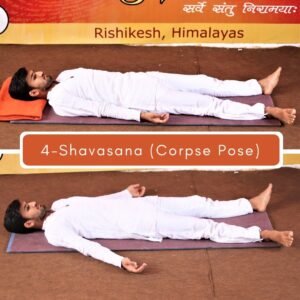Advanced backbend yoga poses are dynamic and changing. They contribute to the enhancement of spinal flexibilities, muscle support, and emotional blockages. These are also poses that enhance body posture, increase blood flow, enlarge the lung capacity and transfer proper energy distribution.
They should be patient, well aligned, and have mindful breathing and hence should be offered to the experienced practitioners. Regular training develops strength, mental clarity and stamina. Ten strong, more advanced backbend poses to lift your practice are listed below.
Let’s Explore the Best Backbend Yoga Poses
Already, we have mentioned that backbend yoga poses help a lot to improve body posture. Now let’s learn about the best backbend yoga poses.
1. Wheel Pose
The Wheel Pose is a complete arch that extends the chest, the flexors of the shoulders and hips, as well as strengthening the arms and spine. It enhances circulation of energy, posture, and the heart centre is opened.
This special backbend pose should be done after the beginners have warmed up in various bridge poses. Exercise makes individuals feel fresh and energised and emotionally charged as it makes people less fatigued and blood circulates better.
2. King Pigeon Pose
The King Pigeon Pose stretches the spine and the chest, and broadly opens up the hips. One leg of a practitioner is bent back, and then he/she reach up to support the foot, bending the spine. It stretches out your hips, releases tension and cleanses your nervous system.
Stretch your lungs and shoulders in advance so as not to get injured. It develops the strength of courage, concentration of mind and receptivity with repeated practice, and it becomes a symbolic asana of surrender and inner change.
3. Bow Pose
Bow Pose is an energizer because the thrusting chest and thighs off the surface, combined with the ankle-holding pose, provide you with energy. It stretches your stomach, spine, and shoulders and builds up your back and legs. It is also good for digestion and massages the organs in the stomach.
Spinal health and flexibility are enhanced by light rocking on the mat. Frequently doing the pose relieves the stiffness of the long sitting positions, opens your lungs to deeper breathing that is more efficient, and also improves your posture, making you feel light, strong, and refreshed.
4. Camel Pose
The pose of the Camel starts at a kneeling posture. Bring the hands towards the heels and bring the back arched and the chest high. This is not only stretching the front of the body, that is the chest, the abdomen and the thighs, but also builds up the spine.
It is excellent in correcting wrong postures, relieving stress caused by hunching, increasing body energy and alleviating fatigue. Emphasis should be placed on lifting the chest rather than getting into the lower back to achieve the desired effect of maximizing the benefits.
5. Locust Pose
In another, more advanced version of Locust Pose, you raise your legs and chest off the ground and then cross your fingers behind your back. This act makes the spine, glutes and hamstrings stronger and the chest and shoulders more open. It strengthens the body, activates abdominal organs and increases circulation.
Yoga backbend poses promote good posture by reversing slouching and boost the energy of the body. It is a good warm-up exercise for more challenging back-bends since the stronger practitioners are able to keep it longer and develop stamina and spinal flexibility.
6. Forearm Wheel
This is an advanced backbend that involves forearm stability and a deep spinal arch. Practitioners begin in Wheel Pose and then proceed to rest on their forearms to intensify the pose. Backbend yoga posture also lengthens the chest, shoulders, and hip flexors and gives the arms and core strength.
The Forearm Wheel enhances confidence, balance and enlarges lung capacity. Since it is a difficult task to do, practice must be assisted. It clears the heart space and enhances bodily strength with frequent training.
7. Full Cobra Pose
The sophisticated one is also dissimilar. The problem with the traditional Cobra is that you do not have to bend your arms to do this. Lift the chest and push as far as you can against the mat. This forms a great arch in the back and a deep extension of the chest and abdomen. It enhances the flexibility of the spine and strengthens the shoulders as well as stimulates digestion.
Breathing in the Full Cobra Pose also improves breathing through the expansion of the rib cage. When done with great care, back-bending asanas serve as a way of relieving stress; that is, they work as an energizer, and they also make the practitioners well prepared for more rigorous backbends.
8. Bridge Pose with Leg Lift
It is an enhanced form of Bridge Pose except that one leg has been lifted in the air and the body is in a deep backbend position. It strengthens the lower back, hamstrings, and glutes, besides stretching the thorax and loosening the hip flexors.
The posture improves posture, balance, power and flexibility. To prevent straining, the practitioners are expected to inhale deeply. With time, you will experience more body awareness and core, and you will be able to master the Wheel Pose.
9. Mermaid Pose
Mermaid Pose is a complicated, but beautiful variation of Pigeon Pose. It involves flexing of the back leg, hooking the foot in where the two arms meet and flexing the spine and lifting the chest. It is known to stretch the thighs, hips, and shoulders, as well as increasing spinal flexibility.
Yoga is done backwards to improve balance, coordination and release of emotions. The Mermaid Pose is a symbol of liberty and growth, which helps practitioners to be patient and calm inside. The frequent practice holds the body pliant, makes it strong, and introduces a receptivity that connects the body and mind.
10. Scorpion Pose
The Scorpion Pose is a halfway inversion and backbend. It entails that the practitioner should be in a position to support his weight using forearms and to bend his legs in such a way that they curve over the head ,resembling a scorpion. The posture requires good muscle tone, coordination and flexibility of the spine.
It works the shoulders, back and core, enhancing focus and concentration. Scorpion Pose also enhances circulation and confidence-building as it will assist you in confronting and overcoming fear. When you are trained and guided, it is okay to practice. The art of posing is a sign of high physical virtuosity, boldness, and profound introspection.
Conclusion
Yoga poses: Advanced backbends, including Wheel, King Pigeon, Camel, and Scorpion, introduce you to the world of physical power, flexibility, and emotional release. In every pose, there has to be preparation, alignment, and mindful practice.
These include improved posture, better breathing, and increased energy. These difficult poses create strength, receptivity, and inner peace. Safety and change are guaranteed by practising with a teacher. Finally, advanced backbends are not only profound physical exercises, but they open the heart, expand consciousness and promote self-development.
Also Go Through:-




